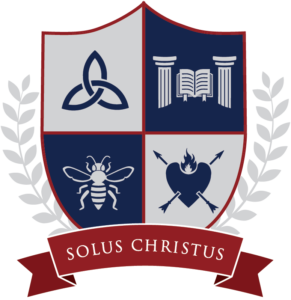A liberal arts education is called “liberal” because it’s the education that a free (in Latin, līber) man can afford to have. Slaves, or anybody constantly tied down with work, don’t have the leisure for such a thing. But a free man has time to learn about things that extend beyond the immediate tasks in the fields or the shop: he can study God and man, language, music, ancient kings, or the night sky. Our students at Mount Hope receive this liberal arts education. This is not because they’re all destined to be great academics who never go to trade school or run a business—it’s simply because as young people, they can afford the time. And studying God and His work and His Word is one of the richest ways to spend one’s leisure.
So why do the students at Mount Hope learn to draw? Isn’t that a pretty specific and hands-on skill for this lofty liberal arts business?
Well, first of all, no. A liberal arts education does not consist of intangible mental exercise. Quite the opposite, actually. We’re studying things in the world, and the world is made of stuff. So in our lessons, we deal with stuff: we count out equal groups of pennies on the table, look at actual Wyoming rock formations, sing the same chord inversions taught in music theory, and find the real spot on the map where Alexander the Great routed Darius III. A liberal arts education pairs very well with real life!
The skill of drawing sharpens a student’s observation of that real world. One of the first and most important axioms in drawing class is “draw what you see, not what you think you see!” My 3rd-5th class recently experienced this while drawing flowers from “real life.” If they did not closely observe the flowers propped up in jars on their desks but drew a preconceived notion of what they thought the flower looked like, their drawings would not look like the models. But if they carefully observed each line of the petals, stem, and leaves—their shapes, sizes, and relative positions—then their drawing would look impressively real! The skill of drawing what you see frees students to observe things with accuracy and in detail, to remember them well, and to appreciate their intricacies.
Drawing also encourages very practical mathematical thinking. Attention to proportion is enormously important when producing an accurate drawing, and proportions require one’s brain to go into “math mode.” You can’t help but think in terms of fractions, measurement, and symmetry when trying to reproduce a cathedral façade or sketch a human face. Drawing helps bring these important mathematical ideas out of the textbook and into real life—as math is meant to be.
Along with its academic advantages, even more importantly, the skill of drawing cultivates the virtue of humility. You can’t just make up how something looks. Instead, if your drawing would be successful, you need to “submit” to what you observe. The same is true in any subject. You have to follow the rules of grammar, or the sentence won’t make sense. You must apply the principles in physics and the logical proofs in geometry, or you’ll simply get it wrong. It is only wise to accept the patterns of history—that the virtues and vices of man have regular, predictable consequences. The humility that drawing encourages is invaluable for any student who wants to learn profitably.
Finally, drawing encourages both patience and confidence. The work might be painstaking at times, but after just a bit of experience in drawing what he sees, the artist knows that his work will turn out, as long as he sticks with it. In this way, the activity of drawing is a wonderful miniature of virtuous endurance. After the time and toil, and probably some frustration and maybe some tears, there is the firm hope of beauty and success in the end.
With the skills it sharpens and the virtues it encourages, drawing is, after all, quite a fine fit within a liberal arts education!
In Christ,
Miss Hahn

